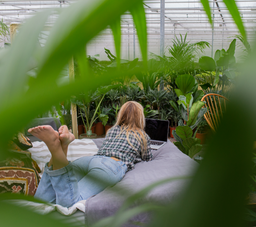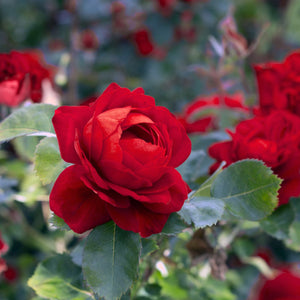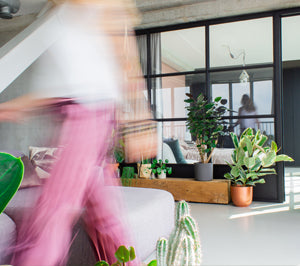Is your plant losing leaves or do you see some troubling discolouration? This can have many different causes and there may not be anything wrong with your plant. It's best not to start guilt-tripping right away by grabbing the watering can! Read through this blog post to learn more about what might be going on with your plant before you go into action mode.
Too much sunlight or a lack thereof?
Lack of light is the leading cause of issues with the leaves of your plant. It leads to the plant not getting enough energy and when that happens, your plant will stop producing leaves and even shed leaves in order to preserve energy. When this happens the plant's leaves can change colour and start spacing out more, making the plant look thin.
Slow growth means the plant won't be taking up water as regularly, so this is a sign to also hold off watering as often so you don't drown the roots.
If you notice the leaves growing into the direction of the sun this is another tell tale sign that there isn't enough light. Put your plant in a brighter spot and you'll see it thrive in no-time. Be sure to rotate it to get even growth!
Too much sunlight is another big issue. Most plants don't like to be put in a super bright spot (think a south-facing window). This not always easy to recognize because over-watering typically gives similar symptoms. If you know you've been diligent with watering then it is safe to assume you may want to put your plant in a less bright spot. Most plants enjoy bright, indirect light—either by an east or west-facing window, or a few feet back from a south-facing window.
Too much or not enough water
Over or under watering your plant can also cause leaf loss. The effects of this are visible as your plant stops growing, loses leaves or gets yellow leaves. The best way to test for over or under-watering is the finger test. Insert your finger as far into the soil as it will go. If the soil is mushy there is too much water - you are over watering or the plant does not have adequate drainage. If your finger is bone dry there is not enough.
A general rule of thumb is to allow the top layer of soil to dry out (about 1-2 inches) before watering. Most plants prefer this method, but some may need much more (i.e. peace lilies) or much less (i.e. snake plants).
Yellow and mushy leaves are usually due to overwatering. If your leaves are getting crispy, it could be do to underwatering.
Falling leaves due to illnesses
Most illnesses actually steal energy and nutrients from your plant. If it has less energy to use it will start dropping leaves to prevent itself from dying. Plants are pretty smart about this but they will still need your help to get rid of whatever is bugging them. If you see issues with the color of leaves, white, brown or black spots check for illnesses. To see some common illnesses, check out this blog post!
Not enough nutrients
If you are at your wits end with your plant and you have tried all of the above tips, then it may have an issue with the nutrient density of the soil. Try giving the plant a little extra fertilizer to see if things get better. Yellowing leaves can be from a lack of iron, manganese, zinc, or nitrogen. If your plant is actively growing, fertilizing should help remediate this issue! Use a well-balanced indoor plant fertilizer. We recommend the Marphyl Organic Soil Enhancer!
Normal leaf loss
Some leaf loss is normal! If your plant has yellowing leaves on the bottom, but is still pushing out new growth, then this is just the normal life cycle of a leaf. Your plant is directing its energy into growing that new leaf! Let the old one yellow naturally or prune it off with some new shears, and enjoy your new growth.










